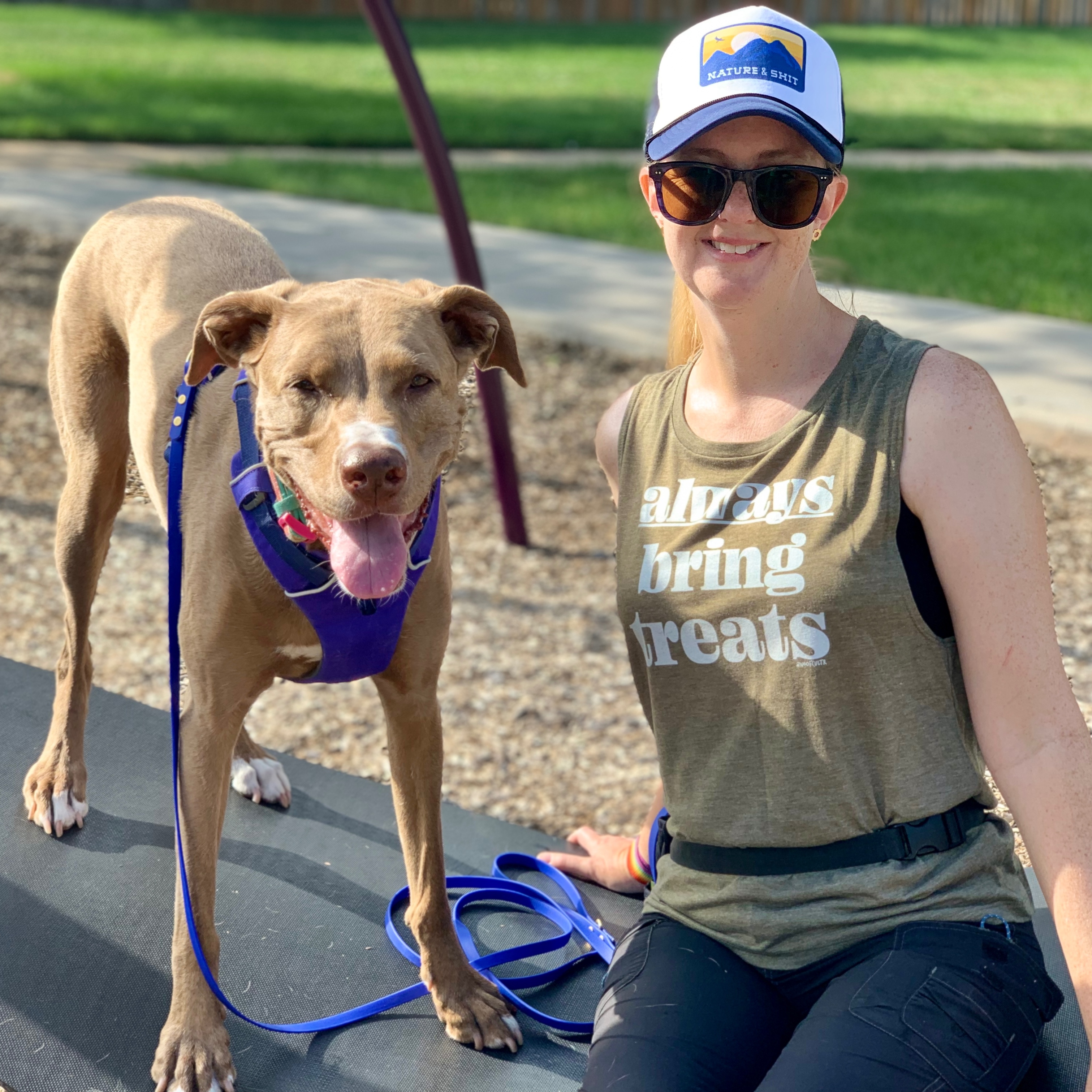Both you and your dog want home-alone time to not be a big deal. Unfortunately, for many dogs with separation anxiety even the thought of being left alone is stressful.
The good news is, with the help of a certified separation anxiety trainer, your dog can learn to enjoy his/her own company while you spend time out of the house. Here are some tips on how to get your dog used to being alone at the sight of your leaving the house. It just takes a few minutes of practice per day!
Before getting started
If you haven't gone through level 1 of this separation anxiety training yet, I highly recommend you take a few minutes to go back to the first guide in this series here and learn how to make the door a bore for your dog. We'll be going through the steps for level 2 in this guide and it's important your dog is successful at level 1 before you start practicing the next steps.
Your Dog's Plan
Stop! Don't read this long article. Instead, get everything you need to know, including all advice on Separation Anxiety, in a customizable step-by-step plan for your dog created by our community of certified trainers and nutritionists.
As a reminder, the steps in level 1 were:
- Step 1) Walk to door, jiggle door handle, return to normal activities.
- Step 2) Walk to door, do not touch door handle, return to normal activities.
- Step 3) Walk to door, open door just a crack (an inch or two) for a few seconds. Close door, return to normal activities.
- Step 4) Walk to door, jiggle door handle, return to normal activities.
- Step 5) Walk to door, open door just a crack (an inch or two) for a few seconds. Close door, return to normal activities.
Now that your dog is used to your going to the door and not leaving, we're going to start adding in a few departure cues like putting on your shoes. Departure cues are anything that signals to your dog you're about to leave. For some dogs, it might be picking up your keys or getting your coat out of the closet. For others, it might be putting on your shoes.
The idea is to get your dog used to seeing you do these things without leaving so that when you do leave, it's not such a big deal.
Important note
Remember, the below training will not cure or prevent separation anxiety in adult dogs or puppies immediately. Preventing separation anxiety is a gradual process you and your dog need to spend time working on with a certified professional. The point of this training is to help your adult dog or new puppy start to be more comfortable with the thought of being left alone.
**For these separation anxiety training sessions to take place, your dog needs to be able to see the door. If you're crate training in a different room, ask me for modifications in the Community discussion in the Anxiety Channel.**
Separation Anxiety
Interested in Separation Anxiety? Follow topics you're interested in to customize your dog’s step-by-step plan so it's most helpful and tailored to your dog when you're ready to get started.
Separation Anxiety Training: Level 2
After you've worked on level 1 for a few days, increase the challenge slightly. Same rules apply as level 1. This is a short 10 minute training session for three days.
In between each step, take breaks for short periods - a quick 30 second to 1 minute break, go about normal business etc. Don't ignore your dog, but try not to make a big deal about any behavior. Take note of behaviors or record sessions with a security/dog camera/phone. Complete all steps at once - do not just walk to the door randomly throughout the day; that's not effective desensitization.
Try this
- Step 1) Walk to door, jiggle door handle, return to normal activities
- Step 2) Walk to door, do not touch door handle, return to normal activities
- Step 3) Put shoes on, walk to door, open door just a crack (an inch or two) for a few seconds. Close door, return to normal activities. Take shoes off.
- Step 4) Walk to door, jiggle door handle, return to normal activities
- Step 5) Put shoes on, walk to door, open door just a crack (an inch or two) for a few seconds. Close door, return to normal activities. Take shoes off.
If your dog is doing well and not showing any signs of stress, you can move on to level 3. If he/she is getting anxious at the idea of your leaving the house, spend more time on level 2 until your dog feels comfortable.
Anxiety
Need more advice? Browse all guides in the Anxiety Channel on topics like Understanding Anxiety, Crate Anxiety, Separation Anxiety, and Noise Sensitivity - created by our community of certified experts for you and your dog.
Dogs progress at different rates, so don't worry if it takes a few days or weeks for your dog to be ready for the next level. The most important thing is that you are using positive reinforcement to teach your dog he/she is in a safe space and going at your dog's pace to not push him/her too far, too fast.
Next up in the Anxiety Channel on Dogly
Now that you've gone through level 2 in how to make the door a bore for your dog with separation anxiety, keep going to level 3 here. Or jump to other step-by-step guides in the Anxiety Channel and learn how to help your dog stay calm outside of the house or how to approach a fearful dog.
Hop over to the Anxiety Channel if you'd like to ask any of the Dogly Training Advocates who are all certified dog trainers a question in the Community discussion or start any of the step-by-step guides in Noise Sensitivity, Crate Anxiety, or Understanding Anxiety.
And if you ever need more personalized training help, please reach out to work with me one-on-one here on Dogly!

